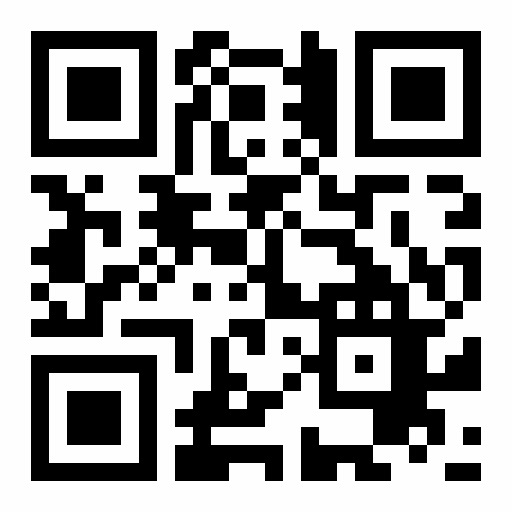
Applied Science Letters


Leishmaniasis is a neglected and re-emerging disease which exists in three types worldwide, including mucocutaneous, visceral, and cutaneous. The disease is among the ten most important parasitic diseases in the tropics. It is widely distributed in ninety countries. The disease is distributed in new foci due to influence of many risk factors, including environmental factors. Evidence indicates an increase in the incidence of disease in the New and Old Worlds at the early years of this century. At present, Cutaneous Leishmaniasis (CL) is one of the most important vector borne diseases in Iran. In Iran, the disease is commonly manifested in 17 out of the 31 provinces of the country, with estimated annual cases exceeding 20000 within the country. There are two dominant types of leishmaniasis in Iran namely kala and azar, and two forms of CL namely urban type and rural type. Considering the current significant situation of CL in the Karun County, the present study was aimed at assessing the epidemiology of the disease and analyzing its potential risk of infection. This is a cross-sectional, descriptive-analytical study conducted during the period of 2013 to 2017 in Karun County. Suspected patients with skin lesions were referred to the Health Center of this county. The diagnosis was dependent largely on clinical examination and Giemsa stain. All slides were viewed under oil immersion for confirming amastigote forms inside or outside macrophages. Patients were examined to evaluate the CL lesion (gender, age, site, size, type, whether lesion is with secretion or without secretion, job, history, number, month, season, method of medicine injection and residential area). A questionnaire was filled through a direct interview with the patients. A P value of p≤0.05 was considered statistically significance. The present study clarified that the highest frequency of the disease had been documented in 2014 with 26 cases. Out of suspected CL cases, 81 were positive by microscopic method and clinical examination. The rate of infection in female and male were 42% and 58%, respectively. The difference in the numbers of patients of both genders was significant. The highest rate of positive (40%) was observed in age group of 20–29 years. In regard to the form of CL lesion, most of them (81.5%) were with secretion. Distribution of CL cases according to residential areas was 58% in villages and 42% in city. The highest rate (19.8%) and the lowest rate (1.2%) of CL were seen in January and August, respectively. The highest rate of CL was observed in winter (44.5%), but 8.4% was seen in summer, which statistically was significant. The highest distribution of CL lesions was observed on hands (43.2%), feet (16%), faces (14.8%), and on few limbs (20.1%). Considering lesions number, the prevalence was as such: single lesion (38.3%), two lesions (24.7%) and three or more lesions (37%), which were significantly different. This study clarifies that CL is a public health problem in districts of Karun County and its preventing must be one of the priorities of health directorate. Therefore, to reduce incidence of this disease, effective control programs are needed.
Fata A, Khamesipour A, Mohajery M, Hosseini- nejad Z, Afzal-aghaee M, Berenji F, et al. What man paper (FTA Cards) for storing and transferring Leishmania DNA for PCR examination. Iran J Parasitology. 2009; 4:37-42.
Fata A. Correlation Between Clinical Appearance, Leishmanin test & ELISA using Monoclonal Antibody in Diagnosis of Different Forms of Cutaneous Leishmaniasis in Mashhad. J Med Sch MUMS. 2004; 47:19-27.
Kassiri,H. Najafi, S. Kazemi, Sh. Lotfi, M. Ten Years Investigation on Situation Analysis of Cutaneous Leishmania-sis in an Endemic Area, Southwestern Iran, Entomol Appl Sci Lett, 2018, 5 (3): 27-34.
Fata A, Dalimi A, Jaafari M. Correlation between clinical appearance, leishmanin test & ELISA using monoclonal antibody in diagnosis of different forms of cutaneous leishmaniasis. Medical J Mashhad Univ Med Sci. 2004; 8347(1): 19-27. [In Persian].
Elahi R, Fata A, Berengi F. Comparing different leishmaniasis laboratory detecting methods. Mashhad J Med Sci.1995; 47:68-72. [In Persian].
Setia, S, Singh, S. Mathur, A. Kaur Makkar, D. & Aggarwal, V. P. 2017. Health care and Geo-medicine: A Review. World Journal of Envi-ronmental Biosciences. Volume 6, Issue 1: 1-3.
Soufizade A. A study on vectors and reservoirs of cutaneous leishmanianisis using molecular methods in Kalaleh City focus in order to providing preventive programs. Thesis for Master Degree of Health Sciences in Medical Entomology and Vector Controlling, Faculty of Health, Tehran: Teh Uni of Med Sci. 2007. 99-100. [In Persian].
Doroodgar A, Asmar M, Razavi MR, Doroodgar M. Identifying the type of cutaneous leishmaniasis in patients, reservoirs and vectors by RAPD-PCR in Aran - Bidgol district of Esfahan Province during 2006-7. KAUMS J (FEYZ). 2009; 13(2):141-146.
Soleimani–Ahmadi M, Dindarloo K, Zare S. Vectors of cutaneous leishmaniasis in Hormozgan province in the region Bastak. Med J Hormozgan. 2004; 8(2):85-89. [In Persian].
Martins LM. Eco – epidemiology of cutaneous leishmaniasis in Bariticupu, Amazon region of maranhao state, Brazil, 1996 – 1998. Icad Saude publica. 2004; 20 (3): 735–743.
Gurel MS, Ulukanligi LM, Ozbilge H. Department of Dermatology, medical Faculty of Harran university 63200, sanliarfa , Turkey , gurelm havran ediu tr , cutaneous leismaniasis in sanliurfa epidemiologic and clinical treatment of the last four year ( 1997 – 2000 ). Int J Dermatol. 2001; 4(1):32-37.
Parvizi P, Moradi G, Amirkhani A. Comparison of molecular methods with other common laboratory methods in detecting leishmania parasites in animal reservoirs of rural cutaneous leishmaniasis. Iranian J Infectious Dis Trop Med. 2009; 14(44):13-19.
Heydarpour F, Sari AA, Mohebali M, Shirzadi M, Bokaie S. Incidence and disability-adjusted life years (Dalys) attributable to leishmaniasis in Iran, 2013. Ethiop J health sci. 2016; 26(4): 381-388.
Elyasi, H. Masoudyar, E. Salouri,S. EPIDE-MIOLOGY OF CUTANEOUS LEISHMANIASIS IN SABZEVAR (IRAN) FROM 2009-2013. Pharmacophore, 8(4) 2017, Pages: 66-71.
Brodskyn C, De Oliveira CI, Barral A, BarralNetto M. Vaccines in leishmaniasis: advances in the last five years. Expert Rev Vaccines. 2003; 2(5): 705-717.
Khamesipour A, Rafati S, Davoudi N, Maboudi F, Modabber F. Leishmaniasis vaccine candidates for development: A global Overview. Indian J Med Res. 2006; 123(3): 423-438.
Kishore K, Kumar V, Kesari S, Dinesh DS, Kumar AJ, Das P, et al. Vector control in leishmaniasis. Indian J Med Res. 2006; 123(3): 467- 472.
Doroudgar A, Dehghan R, Hooshya H. Prevalence of salak in Aran and Bidgol. J Qazvin Univ Med Sci. 1999; 3(3): 84-92. [In Persian].
Jahanifard E, Yaghoobi-Ershadi MR, Akhavan AA, Akbarzadeh K, Hanafi-Bojd AA, Rassi Y, et al. Diversity of sand flies (Diptera, Psychodidae) in southwest Iran with emphasis on synanthropy of Phlebotomus papatasi and Phlebotomus alexandri. Acta tropica. 2014; 140:173-180.
Afshar AA, Rassi Y, Sharifi I, Abai M, Oshaghi M, Yaghoobi-Ershadi M, et al. Susceptibility status of Phlebotomus papatasi and P. sergenti (Diptera: Psychodidae) to DDT and deltamethrin in a focus of cutaneous leishmaniasis after earthquake strike in Bam, Iran. Iranian J arthropod-borne dis. 2011; 5(2):32-41.
Hosseini-Vasoukolaei N, Idali F, Khamesipour A, Yaghoobi-Ershadi MR, Kamhawi S, Valenzuela JG, et al. Differential expression profiles of the salivary proteins SP15 and SP44 from Phlebotomus papatasi. Parasit vectors. 2016; 9 (1): 357.
Khajedaluee M, Yazdanpanah MJ, SeyedNozadi S, Fata A, Juya MR, Masoudi MH, et al. Epidemiology of cutaneous leishmaniasis in population covered by Mashhad University of Medical Sciences in 2011. Med j mashhad univ med sci. 2014; 57(4): 647-654.
Dorodgar A, Mahbobi S, Nemetian M, Sayyah M, Dorodgar M. An epidemiological study of cutaneous leishmaniasis in Kashan (2007-2008). Journal of Semnan University of Medical Sciences 2009; 10(3): 177-184. [In Persian].
Nazari M. Cutaneous leishmaniasis in Hamadan, Iran (2004-2010). Zahedan Journal of Research in Medical Sciences. 2012; 13(9):39-42. [In Persian].
Mohammadi - Azni S, Nokandeh Z, Khorsandi AA, Sanei Dehkordi AR. Epidemiology of cutaneous leishmaniasis in Damghan district. Iranian Journal of Military Medicine. 2010; 12(3):131-135.[In Persian].
Dehghan A, Ghahramani F, Hashemi B. The epidemiology of anthroponothic cutaneous Leishmaniasis in Larestan (2006-2008). J Jahrom Univ Med Sci . 2010; 8(3): 7-11. [In Persian].
Jones T, Johnson W, Barretto A, Lago E, Badaro R, Cerf B, et al. Epidemiology of American cutaneous leishmaniasis due to Leishmania braziliensis brasiliensis. Journal of Infectious Diseases .1987; 156(1):73-83.
Mujtaba G, Khalid M. Cutaneous leishmaniasis in Multan, Pakistan. International Journal of Dermatology. 1998; 37(11):843-845.
Rabat Serpoushi D, Hosseini S H, Abbasi M, Sophy S, Rajabzade R. Factors affecting the prevalence of cutaneous leishmaniasis in the Jajarm, During the years 2005-2010. Proceedings of the First National Conference on Applied Research in Public Health and Sustainable Development 2012 Dec. 13-14; North Khorasan: Iran. [In Persian].
Tasharifi F, Haqqani Nasimi A, Abdollahi M, Akrami A R. The prevalence of cutaneous leishmaniasis in the Esfarayen city the first 7 month of 2012. Proceedings of the First National Conference on Applied Research in Public Health and Sustainable Development 2012 Dec. 13-14. [In Persian].
Kassiri H, Ebrahimi A, Lotfi M. The Prevalence of Cutaneous Leishmaniasis in East of Ahvaz County, South-Western Iran. Indo Am J P Sci. 2017; 4(11). 4252-4262.
Kassiri H, Shemshad K, Lotfi M, Shemshad M. Relationship trend analysis of cutaneous leishmaniasis prevalence and climatological variables in Shush county, south-west of Iran (2003-2007). Acad J Entomol . 2013; 6(2): 79-84.
Kassiri H, Kassiri A, Najafi H, Lotfi M, Kassiri E. Epidemiological features, clinical manifestation and laboratory findings of patients with cutaneous leishmaniasis in Genaveh County, Bushehr Province,Southern Iran. J Coast Life Med. 2014; 2(12): 1002-1006.
Ebadi M, Hejazi S. Epidemiology of cutaneous leishmaniasis in Isfahan Borkhar school students. Journal of Kerman University of Medical Sciences. 2003; 2(2):92-98. [In Persian].
Karimi-Zarchi A, Mahmoodzadeh A, Vatani Ah,Shyrbazu Sh. Epidemiology of cutaneous leishmaniasis in the border villages of Sarakhs city. Journal of Shahid Sadoughi University of Medical Sciences and Health Services. 2004: 30-35. [In Persian].
Markele WH, Khaldoun MMO. Cutaneous leishmaniasis: Recognition and Treatment. Am Fam Physic. 2004; 69: 455-460.
Athari A, Jalallu N. Epidemiological survey of cutaneous leishmaniasis in Iran 2001-2005. Sci J Isfahan Univ Med Sci. 2006; 24(82): 8-13. [In Persian].
Hamzavi Y, Hamzeh B, Mohebali M, Akhoundi B, Ajhang K, Khademi N, et al. Human visceral leishmaniasis in Kermanshah province, western Iran, during 2011-2012. Iran J Parasitol. 2012; 7(4):49-56.
Dehghan A, Ghahramani F, Hashemi B. The epidemiology of anthroponothic cutaneous Leishmaniasis in Larestan (2006-2008). J Jahrom Univ Med Sci. 2010; 8(3): 7-10. [In Persian].
Javaherian Z, Hayat Gheib D, Abid KH. Epidemiological survey of cutaneous Leishmaniasis in Mirjaveh district of Zahedan. Zahedan J Res Med Sci. 1999; 27: 27-31. [In Persian].
Abasi AE, Ghanbary MR, Kazem NK. The epidemiology of cutaneous leishmaniasis in Gorgan (1998-2001). Ann Military Health Sci Res. 2004; 2:275-278. [In Persian].
Sharifi I, Poursmaelian S, Aflatoonian MR, Ardakani RF, Mirzaei M, Fekri AR, et al. Emergence of a new focus of anthroponotic cutaneous leishmaniasis due to Leishmania tropica in rural communities of Bam district after the earthquake, Iran. Trop Med Int Health. 2011; 16(4): 510-513.


